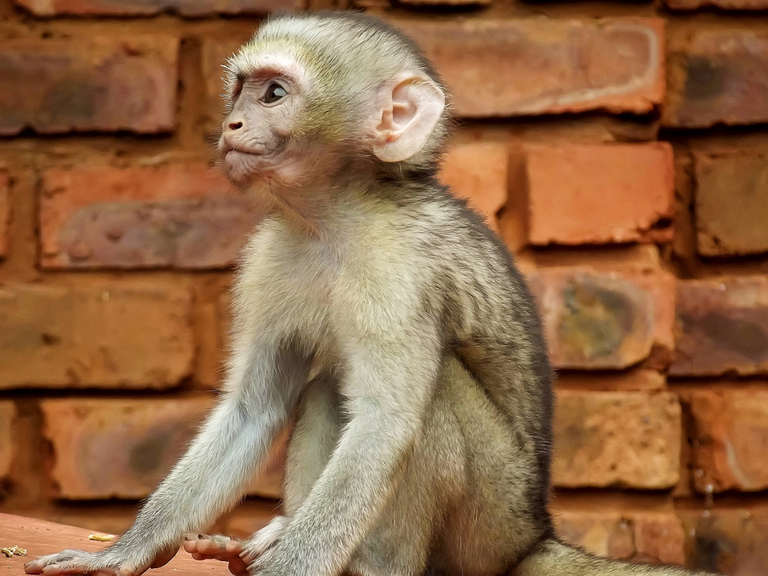How much do you know about this sickness/ Monkeypox

https://pxhere.com/en/photo/702582
My friend Semien, who is from Texas, explained to me the current condition of monkeypox in the United States while we were conversing this week.
According to what he said, scientists are still trying to figure out a better approach to cope with this virus and as a result, there is no real treatment to cure it fully. And as of this writing, the number of people afflicted with this virus in Houston has reached its peak!!
In the meantime, I have done detailed research into this virus and will post my results on this blog. So, don't forget to read to the conclusion!
The monkeypox virus is the only known causative agent of the disease known as monkeypox. It causes a rash in addition to symptoms that are similar to the flu. It is a member of the same family as the more well-known virus that is responsible for causing smallpox, and that family is termed the orthopoxvirus family.

In 1958, there were two outbreaks of a disease that was similar to the pox in groups of monkeys that were being used for research. This led to the discovery of the virus. It is most commonly passed from human to human through skin-to-skin contact with an infected person. However, it can also be passed from infected person to infected person through contact with infected rodents.
One strain of the monkeypox virus is thought to have originated in Central Africa, whereas the other strain is thought to have originated in West Africa. The West African clade, which is less severe than some of the other strains, is the one responsible for the current global outbreak in 2022.
Pathophysiology
The virus that causes monkeypox is a member of the Poxviridae family and the genus orthopox. Other members of this family include the viruses that cause cowpox, vaccinia, and smallpox. It is a zoonotic virus, and the primary mode of transmission is thought to be direct contact with sick animals, or maybe the consumption of their flesh that has not been thoroughly cooked.
Infection can happen through cuts or sores on the skin or in the mouth, especially when the skin barrier is broken by bites, scratches, or other injuries. The disease was first seen in 1958 in lab monkeys, which is why it is called "monkeypox," even though rodents are thought to be the main source of the disease in Africa.
Several varieties of forest-dwelling rodents have been found to carry the orthopoxvirus, which causes diseases like monkeypox, according to a 2010 study. Subclinical infection may occur in people who live in or near forests due to indirect or low-level exposure.
During an outbreak in the DRC in 1996–1997, it was found that diseases could also spread from person to person. Studies about this outbreak showed that monkeypox was spread to 8–15 per cent of people who lived in the same house. Before this, monkeypox wasn't known to be a big problem for world health because it wasn't known that human infection rates played a big role in how the disease spreads. Based on what we know about the 2003 US outbreak, the main way the disease spread was from animals to animals and from animals to people. In the 2003 US outbreak, however, it was not clear that one person had come into contact with an infected animal. This meant that human-to-human transmission could not be ruled out.
Options throughout the world have confirmed that human-to-human transmission will be a major role in the pandemic in 2022. The sexual transmission of monkeypox has not been proven even though the majority of the patients are guys who have engaged in sex with men.
How it is disseminated or passed on.
There are a few distinct ways that the monkeypox virus might spread. The following are some of the ways that the virus can be passed from one person to another:
Coming into direct contact with the infectious rash, scabs, or body fluids is the one way to get the disease.
Infection can spread through direct touch with a scab, rash, or bodily fluids infected with the disease.
Emotional or personal physical contact, such as kissing or snuggling, can lead to the release of respiratory secretions.
Exposure to garments or linens previously used by someone with an infectious rash or bodily fluids
Through the placenta, pregnant women can transmit the virus to their developing fetus.
Aside from being scratched or bitten by an animal, it's also possible for people to contract the disease via consuming or utilizing goods made from an infected source, such as meat.
The contagious period for monkeypox begins when the first symptoms appear and continues until the rash has completely cleared up and a new layer of skin has developed. In most cases, the illness will persist between two and four weeks. People who are not infected with the virus themselves are unable to pass it on to others. It is not known at this moment whether monkeypox can transmit through vaginal fluids or the sperm of a male.
Manifestations of the virus (Symptoms), monkeypox

One to two weeks after exposure, however, it can take as long as three weeks to become ill.
Doctors have discovered a few unusual symptoms that don't fully fit the typical definition of monkeypox in the present outbreak.
Symptoms of monkeypox that aren't typical include:
Starting in your pubic area, genitals, or around your anus area, a rash can be extremely itchy and painful.
There are fewer humps (one to two bumps)
• Itchy, bumpy, or open sores with a pus-filled appearance
• Even if they're discovered in the same general location, bumps can appear in various phases.
• Before the rash develops, some patients may not have flu-like symptoms like a temperature. Some folks can go without a fever.
These signs and symptoms have shown in prior outbreaks and may do so in the future:
A rash will appear within one to three days of your fever beginning. Your face is usually where it all begins before spreading throughout your body.
Hands, feet, arms, and legs are the most commonly affected areas. Flat, round lesions (macules) develop into slightly elevated bumps (papules), which subsequently develop into pimples filled with clear fluid (a pattern that is often seen) (vesicles).
Between ten and 150 pimples on the skin have been reported by most people. As the pustules harden and fall off, they transform into lumps with yellowish fluid (pustules). Immediately notify your doctor if you see any of these symptoms.
A day before the rash appears you can start spreading it to others. Your sores should be scabbed over and free of any other symptoms within 21 days after your first symptoms, or until you are no longer ill.
The following are some of the diagnostic approaches utilized by medical professionals:
Lab testing. This entails examining the fluid that is extracted from sores or scabs that have dried up. A polymerase chain reaction (PCR) test can be used to determine whether or not the virus is present in these samples.
Biopsy. During a biopsy, a little bit of skin tissue is removed and examined to determine whether or not it contains the virus.
In most cases, it is not advisable to get a blood test. This is because the monkeypox virus can be found in the blood for a brief period. As a consequence, this test cannot provide an accurate diagnosis of monkeypox.
Many persons who contract the monkeypox virus experience modest symptoms that resolve on their own without the need for medical intervention. But the outlook for monkeypox is dependent on numerous factors, such as whether or not you've been vaccinated before, your health at the start, other illnesses you have at the same time and comorbidities. After consultation with the Centers for Disease Control and Prevention (CDC), some patients may need treatment. These patients can be :
• Acutely unwell individuals (e.g., hemorrhagic disease, confluent lesions, sepsis, encephalitis, or other conditions requiring hospitalization)
• People who don't have a strong immune system because of things like HIV/AIDS, leukaemia, lymphoma, generalized malignancy, solid organ transplantation, treatment with alkylating agents, antimetabolites, radiation, tumour necrosis factor inhibitors, high-dose corticosteroids, being a recipient of a hematopoietic stem cell transplant less than 24 months after the transplant or less than 24 months after the transplant but with graft-versus-host disease or
• Patients younger than 8 years old who are in the pediatric population
• People who have abnormal infections caused by the monkeypox virus, such as those caused by unintentional implantation in the eyes, mouth, or other anatomical sites where monkeypox virus infection might constitute a unique threat (e.g., the genitals or anus)
• Women who are either pregnant or nursing
What sorts of treatments are available for monkeypox?
Monkeypox has no known cure as of this writing. It is, however, self-limiting, meaning that it will get better on its own.
Controlling the outbreak and halting the spread of disease are both possible with the help of a few drugs. They are as follows:
Vaccinia vaccine (smallpox vaccine)
Antiviral medication (in animals)
Vaccinia immune globulin (VIG)
Approximately 85% of people who receive the smallpox vaccine will be protected against monkeypox, according to WHO statistics. If you were immunized against smallpox as a child and then get the monkeypox virus as an adult, your symptoms may be minor.
A vaccination that protects against both smallpox and monkeypox was authorized in 2019. Even yet, it isn't readily distributed.
Is there a way to avoid getting monkeypox?
You can help prevent monkeypox by taking the following preventative measures:
It is important to avoid coming into close contact with the monkeypox rash. It is important to remember not to scratch or pick at a person who has monkeypox while they are contagious.
Do not kiss, embrace, cuddle, or have sexual relations with them under any circumstances.
Do not give them any of your cups or eating utensils to use.
A person who has monkeypox should not have their beds, towels, or clothing touched by anybody else.
Using a hand sanitiser containing alcohol is a good way to keep your hands clean, especially if you've come into touch with someone who is sick.

That brings us to the conclusion. I want to express my gratitude to you for taking the time to read this post, and I pray that God will richly reward you.

“Monkeypox - NHS.” Nhs.Uk, www.nhs.uk, https://www.nhs.uk/conditions/monkeypox/. Accessed 7 Aug. 2022.
References
Jones, Dustin. “What Is Monkeypox? How to Protect Yourself and What to Watch out for : NPR.” NPR.Org, www.npr.org, 5 Aug. 2022, https://www.npr.org/2022/07/24/1113197119/monkeypox-symptoms-prevention-vaccines-what-to-know.
CDC. “Monkeypox in the U.S.” Centers for Disease Control and Prevention, www.cdc.gov, 22 July 2022, https://www.cdc.gov/poxvirus/monkeypox/about.html.
WHO. “Monkeypox.” Monkeypox, www.who.int, 19 May 2022, https://www.who.int/news-room/fact-sheets/detail/monkeypox.
Graham, Mary Beth. “Monkeypox: Practice Essentials, Pathophysiology, Etiology.” Monkeypox: Practice Essentials, Pathophysiology, Etiology, emedicine.medscape.com, 29 July 2022, https://emedicine.medscape.com/article/1134714-overview.
@ClevelandClinic. “Monkeypox: Causes, Symptoms, Treatment & Prevention.” Monkeypox, my.clevelandclinic.org, https://my.clevelandclinic.org/health/diseases/22371-monkeypox. Accessed 7 Aug. 2022.


Thanks for your contribution to the STEMsocial community. Feel free to join us on discord to get to know the rest of us!
Please consider delegating to the @stemsocial account (85% of the curation rewards are returned).
You may also include @stemsocial as a beneficiary of the rewards of this post to get a stronger support.
Dear @jsalvage , Thank you for article!